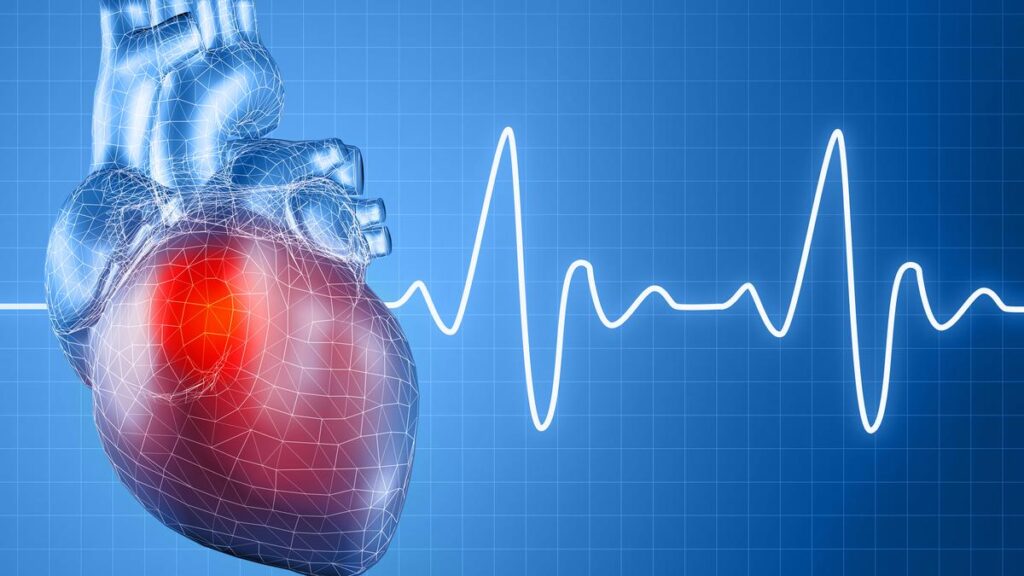
Photograph used for representational purposes only
| Photo Credit: Getty Images/iStockphoto
The emergency text message just before my phone rang had the heading “STEMI Alert” and contained an EKG, which confirmed that the patient was having a heart attack. The ST elevation myocardial infarct, “STEMI,” indicated a total blockage of an artery feeding the heart. The ST elevation is a marker on the EKG, indicating the inability of millions of cells to produce ATP, the energy needed to carry out essential cellular functions, leading to impending cell death. Hospitals all over the world recognise this as an emergency and have a process to get blood flow back to the dying heart: the standard of care is the restoration of blood flow to the heart within 90 minutes of the patient’s arrival at the hospital, also known as the door-to-balloon time (D2B time).
The race against time was on, and the ER physician’s phone call gave me a brief patient history. The patient had begun having chest pain and, rather than call 911, called his wife and asked her to drive him to the ER. While she was driving, he abruptly collapsed in the passenger seat, probably secondary to an electrically unstable heart rhythm causing sudden death. Sudden death, unfortunately, occurs in about 10 % of STEMI cases, and most of these patients don’t make it to the hospital. What happened next is not entirely clear, but when she saw him collapsing, his wife hit the brakes, causing him to hit the dashboard, which potentially acted as a chest thump, causing the electrically unstable rhythm to reset, and he came to.
The ER doctor took one look at his face and head and ordered a CT scan of his head to make sure he hadn’t sustained traumatic brain injury. Despite that little delay, he was being prepped and draped by the time I did a brisk walk across campus to get to the lab, and his EKG still showed the ST elevation, which ironically, looked like tombstones. The treatment of a STEMI continues to be one of the most gratifying moments in medicine. One moment, the person is on the table in extremis, moaning, with the heart rate and blood pressure all over the place and every monitor alarming, and the next second, just like flipping a switch, the return of flow with a tiny wire and balloon normalises everything. This case was no different; once I got the blood flow back, he recapped his story and joked about almost killing his wife in the process as I put a little slotted mesh stent to keep the artery open. He was completely normal by the time he got to his room and was home the next day, his impending death a memory.
I looked at his timeline the next day: his D2B time, despite the CT scan, was 48 minutes, and the time it took to open the artery from the first needle stick to the balloon opening artery was 5 minutes. These times are in tune with most hospitals, thanks to modern medicine and administration streamlining the process.
Treating heart attacks wasn’t always so easy. Before 1970, we didn’t even know for sure that heart attacks were caused by a plaque in the coronary artery rupturing followed by blood clot formation. There was a debate as to whether the blood clot found in an autopsy caused the heart attack, or if it was a post-mortem finding. The treatment for a heart attack was rest, oxygen, and morphine. Bed rest was recommended for 4-6 weeks for the heart to heal.
Once physicians confirmed that heart attacks were due to clot formation, clot busters or thrombolytic agents became the treatment of choice. I was in medical school in the 1990s when these drugs became the standard of care in routine practice. We finally had a solution to treat heart attacks, along with dedicated cardiac care units, to treat heart attacks. The primary issue was bleeding, especially in the brain, and clot busters worked in about two-thirds of patients at best.
In 2003, following multiple studies showing angioplasty and stents superior to clot busters for heart attacks, the cardiology community rolled out the concept of patients directly going to the cardiac catheterisation lab, with the idea of the door to balloon time. I was in my cardiology fellowship when this change happened, and for the first time, I experienced the magical switch in the patient’s symptoms as soon as the balloon restored blood flow.
Over the years, our equipment improved, and stents became easier to deliver. Drug-coated stents use nanotechnology to deliver medicine targeted to prevent artery re-narrowing. The Centre for Medicare Services (CMS) now uses D2B time as a quality metric for hospitals, which has resulted in administrative resources being poured into streamlining the patient to the catheterisation laboratories, such as EKGs being done in the field and transmitted to the ER with a team ready for the patient.
I am now getting grey, and the wrinkles are starting to set in. I have been through the heartaches and highs of the revolution in technology that cardiology has witnessed over the past decade. I wonder whether I am getting too old for the trade when I come in at odd hours of the night for a STEMI, but when I am done, and the patient is tucked in, I realise that the simple angioplasty procedure still holds a special place in my heart.
Published – April 05, 2025 01:00 pm IST

